Painting wooden shutters with sustainable matte paint
Wooden shutters are beautiful details for a home or farm. It is important to maintain and protect them properly so that they continue to be good-looking and wood rot is prevented. Painting your wooden shutters ensures that they last longer and that they match the look you want to give your home.
Usually wooden shutters are exposed to wind and direct sunlight. Our Moose F paint is designed to withstand these conditions, thus perfect for painting wooden shutters. Wooden shutters expand and shrink due to moisture and temperature differences. What makes our paint special is its vapor-permeable characteristics. This allows the wood to ‘breath’, expand and shrink optimally – without flaking off!
- Completely matte, beautiful Scandinavian colors.
- Easy to use and maintain, no sanding needed between the paint layers!
- Environmentally friendly, water dilutable, does not smell.
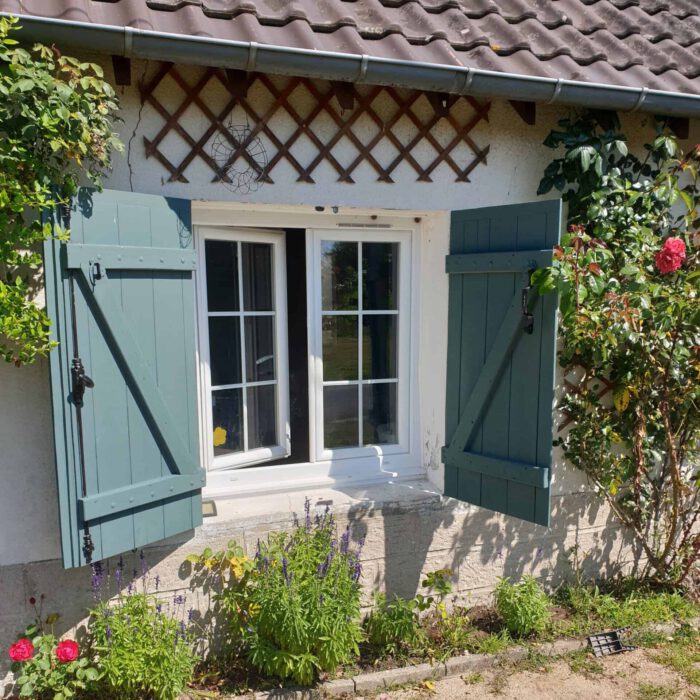
Painting wooden shutters? Order our matte paint here
Muriel Ballet (Chatehoy, FR): “I have just finished painting my shutters. I am very happy with the result. Your paint is very pleasant to use, does not drip, does not leave any traces. The result is fantastic, with a very soft and natural “powdery” effect.”
Painting wooden shutters: step-by-step
Shutters have a long tradition. While wooden shutters nowadays are primarily considered a beautiful decorative element, in the past they served both as sun protection for the window and to darken the room. Due to the constant influence of the weather, however, the color flakes off over the years and the original shine fades. Instead of completely replacing the shutters, it is usually sufficient to repaint or varnish the wood. We have summarized the best way to do this here.
- For unpainted wooden shutters
The best surface for our paint is grease-free and (slightly) rough. If the wood is planed, roughen it up by sanding with 80 grit. This is not necessary if the wood is weathered or roughly sawn. Degreasing can be done with, for example, our linseed oil soap.
When the wood of your shutters is completely fresh, it is recommended that you leave it untreated for six months. This makes the top layer more receptive to paint. - Repainting wooden shutters
Clean the shutters with soapy water containing e.g. our Polarsken linseed oil soap. If the paint is flaking, remove this layer first before adding a new one.
To find out how well the old paint is still adhering, use a sharp knife to score a small 1 to 2 mesh grid in the paint. Press tape firmly over it. If more than half of the paint tears off when you remove the adhesive strip, it is not suitable as a base for the new coat of paint. In these cases, it is advisable to sand the shutters thoroughly until all remaining layers of paint are removed. Preferably, sand in the direction of the grain so that the wood fibers are not damaged.
If the paint is well applied and does not flake, you can suffice with a coarse sanding (use grit 80). Sand off the paint layer, up to the chalky base layer. - The best paint for your type of wood
Check the type of wood that is used. Oregon pine, Douglas and Larch are softer wood types that can shrink and expand due to moisture and temperature differences. For painting these wooden shutters, Moose F is recommended.
Harder wood types (meranti, teak etc) remains dimensionally stable, but contains less pores. Our Moose RDM is best used if the wood remains dimensionally stable (no shrinking, expanding or tearing). This is usually the case with harder types woods. Moose RDM requires a base layer. This can either be an old layer of paint that doesn’t flake or a thin layer of Moose F. - Painting your wooden shutters
Now that you have your grease-free and rough surface, it’s time to apply the first layer of paint.
It is best to use a brush for painting with Moose F, this type of paint does not leave brush marks. Let it dry for a few hours and then apply a second coat.
If you chose Moose RDM, use a felt roller to spread the paint evenly. - Drying time
This depends on temperature and humidity. You can use as a general guideline: above 15 degrees and at a humidity of 80%, the paint can be painted over after 6 hours and is hardened after 2-3 days. We strongly advise against painting below 13 °C.
- Maintenance
With hard woods you can switch to Moose RDM when adding a new layer in the future. This is more resistant against the weather conditions. With softer woods we don’t recommend this. When adding a ‘maintenance’ layer, grinding is not needed. Simply clean the wooden shutters and add a new layer of paint.
Painting wooden shutters? Order our matte paint here
Painting wooden shutters inside
Wooden shuttes can also be a part of the interior. Because Moose Färg products contain virtually no harmful substances, you can paint your indoor wooden shutters in the same way as outside. Often people choose to start with a thin layer of Moose F, after which they finish it off with Moose RDM. This is possible because inside, the wood is affected less by weather conditions. Consequently the wood will shrink and expand less (more dimensionally stable). Moose RDM contains more oil and pigments. Therefore it is no problem to touch and clean the wood. Both Moose RDM and Moose F are fully matte.
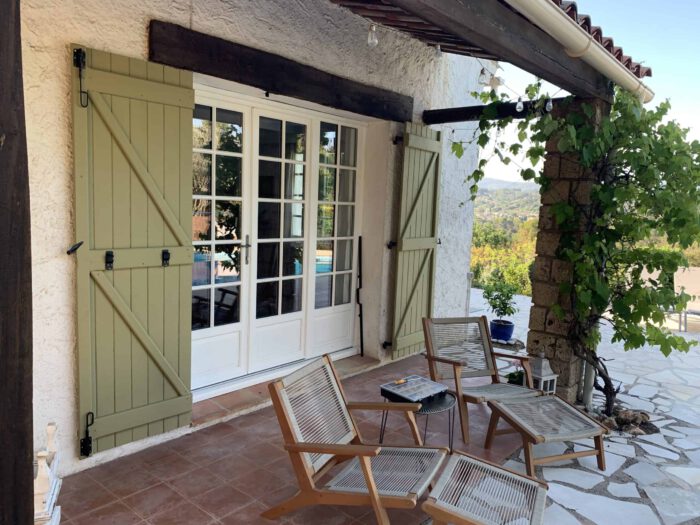
Color advice for wooden shutters
Painting your wooden shutters is the ideal way to freshen up the look of your house. Old shutters can look as good as new with a fresh layer of paint. The Moose Färg colors are completely matte. To get a good impression of the colors we offer you
- To get a good impression of the colors, we recommend that you view several examples of our paint colors.
- All colors are shown exactly on our free color chart. They are hand painted so you get a good impression of the color.
- Do you want to combine some of the colours? With our online color picker you can try out different color combinations.
- If you really want to see how the color turns out on your shutters, order a sample of the paint.
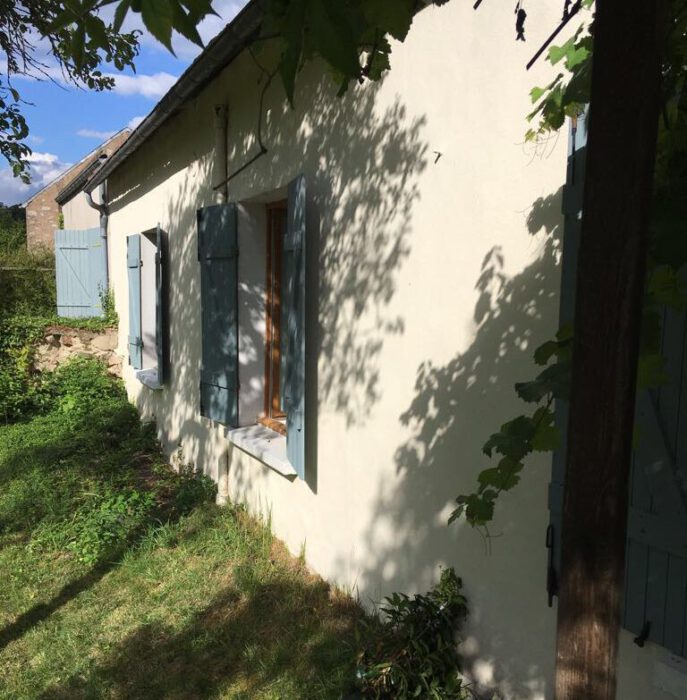
Request a chart with color samples
Of course, choosing a color is a matter of personal taste. Nonetheless you can consider the tips above when painting your wooden shutters.
Painting shutters of a brick or stone house
A house of bricks has a lot of character due to the color of the bricks. Bright colors don’t tend to combine that well with bricks. More neutral shutters in Kiruna Grå (perl grey), Skiffer Grå (slate grey) or Ljus Blå (light blue) are a bit more calm and timeless. In the example below you can see a combination of Ljus Blå (light blue) and Norrland Vit (snow white) on a brick house.
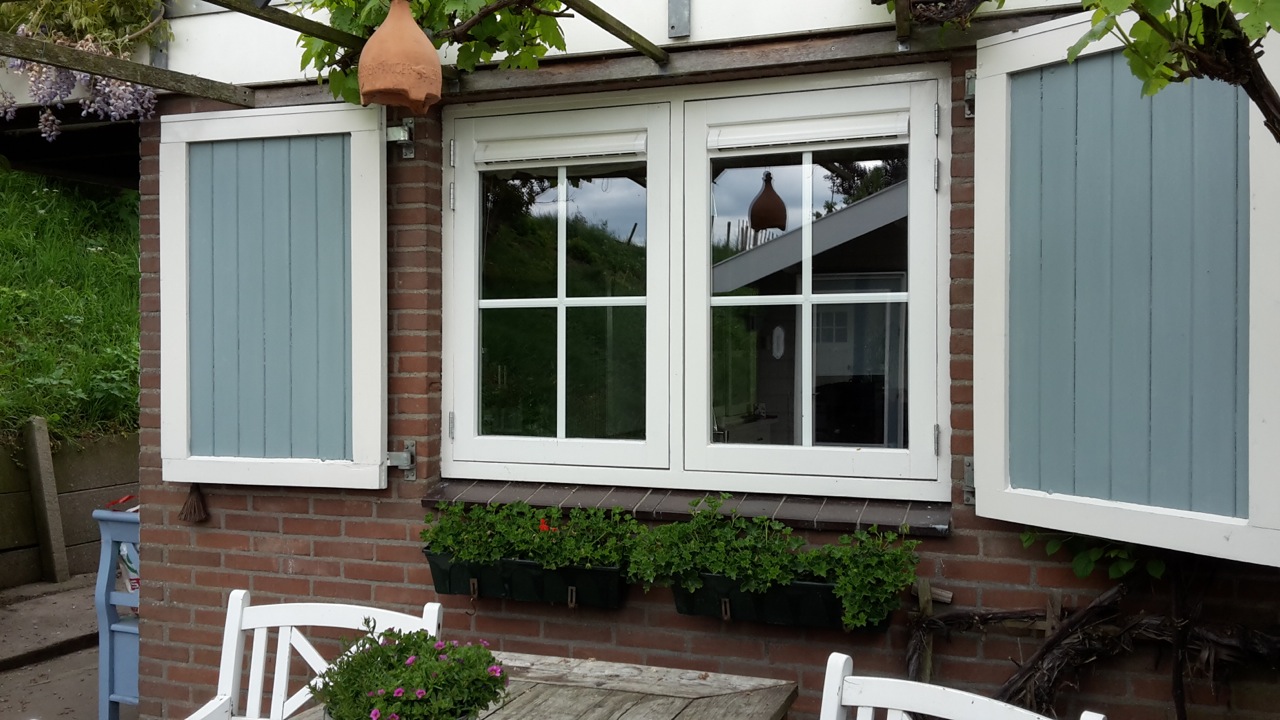
However, would you like your wooden shutters to stand out a bit more? We advise to match a light background with a dark color and vice versa. Jörg Wamser from Bonn (Germany) painted his shutters in Blytungsgrå (lead grey). In the picture below they might appear a bit darker. The dark gray shutters of the white house in Greece below also give the house a luxurious appearance. Or as the owner wrote to us: “The paint is an eye catcher for people who come visit.”
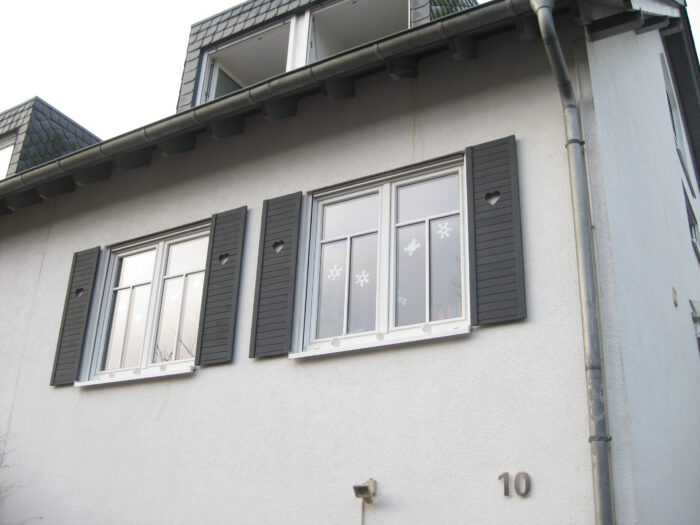
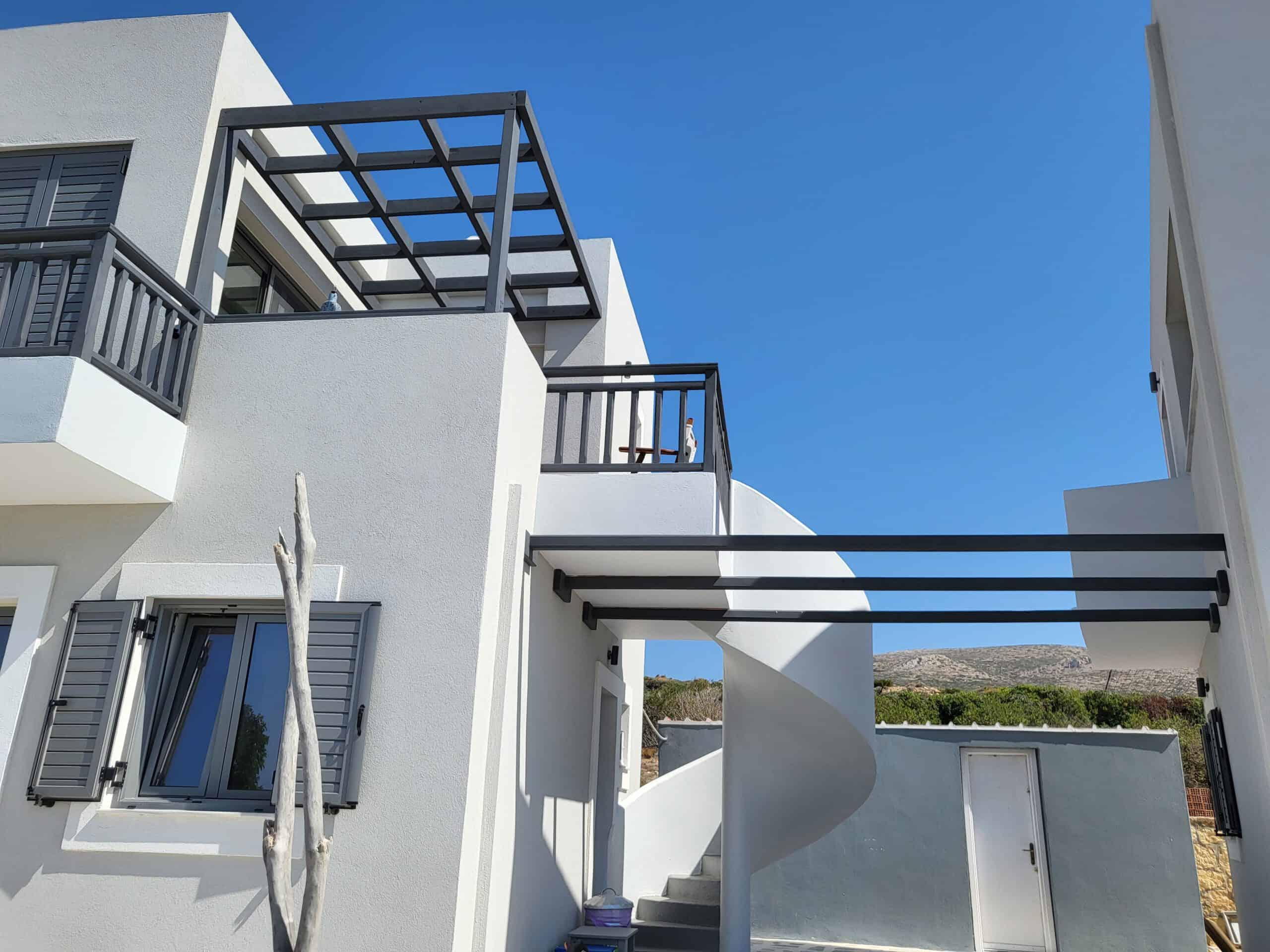
Painting shutters of a wooden house
Wooden houses typically give off a more peaceful and calm look, making brighter colors a good choice. Falu Röd (Swedish red), Bohus Blå (Swedish blue) or a combination of the two is possible. In the picture below for example, a combination of a Ljus Blå (light blue) house and Bohus Blå (Swedish blue) shutters was chosen. It can also be beautiful to combine a bright color wooden house with white shutters (Norrland Vit). Of course, it all comes down to personal preference.
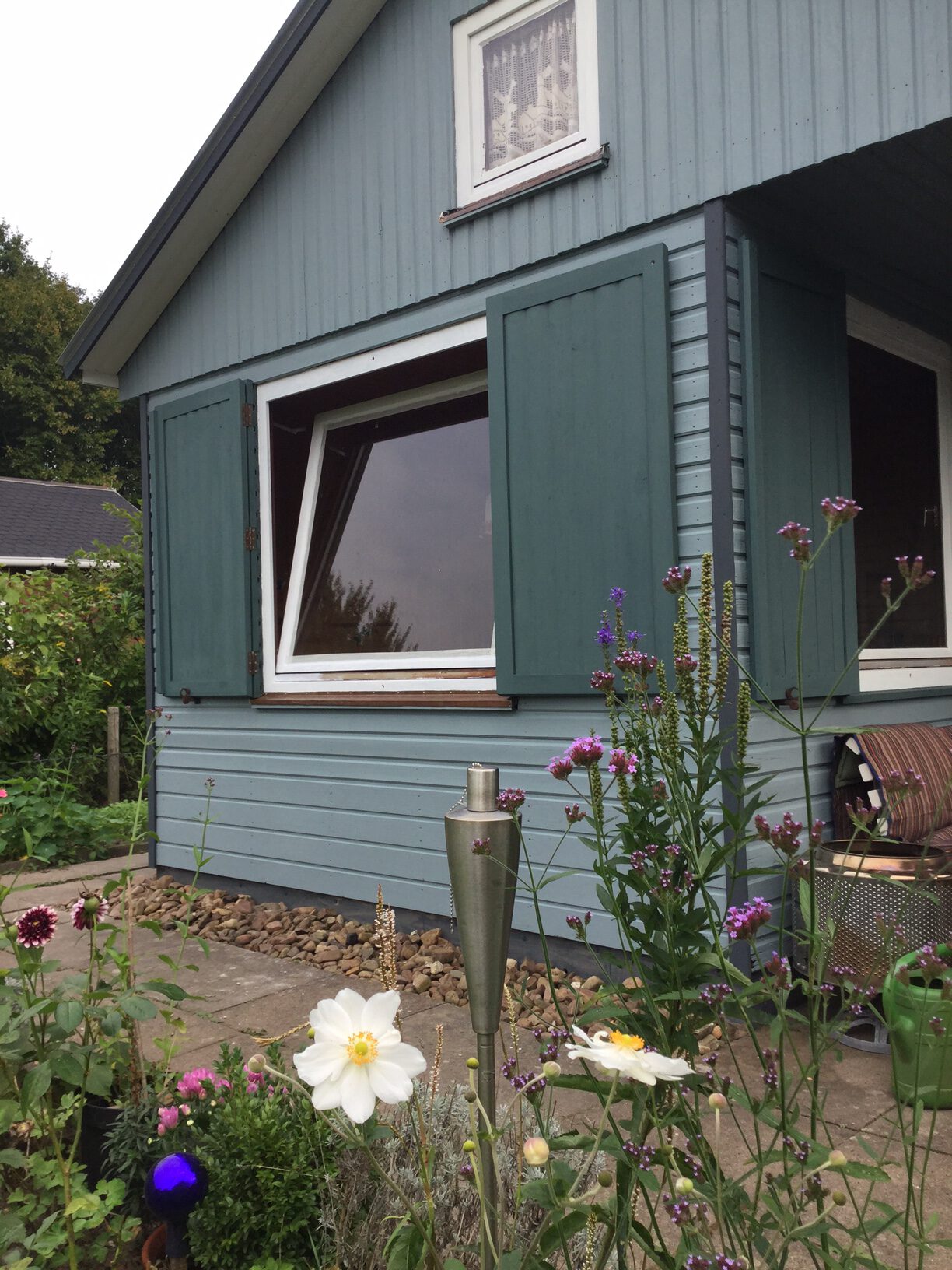
Would you like additional, personal advice?
We are happy to help. Send an e-mail or call +31(0) 6 55 333 165. Watch our Instruction Video for more information. Apply here for a free color-card.


